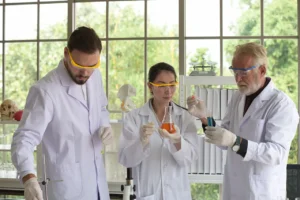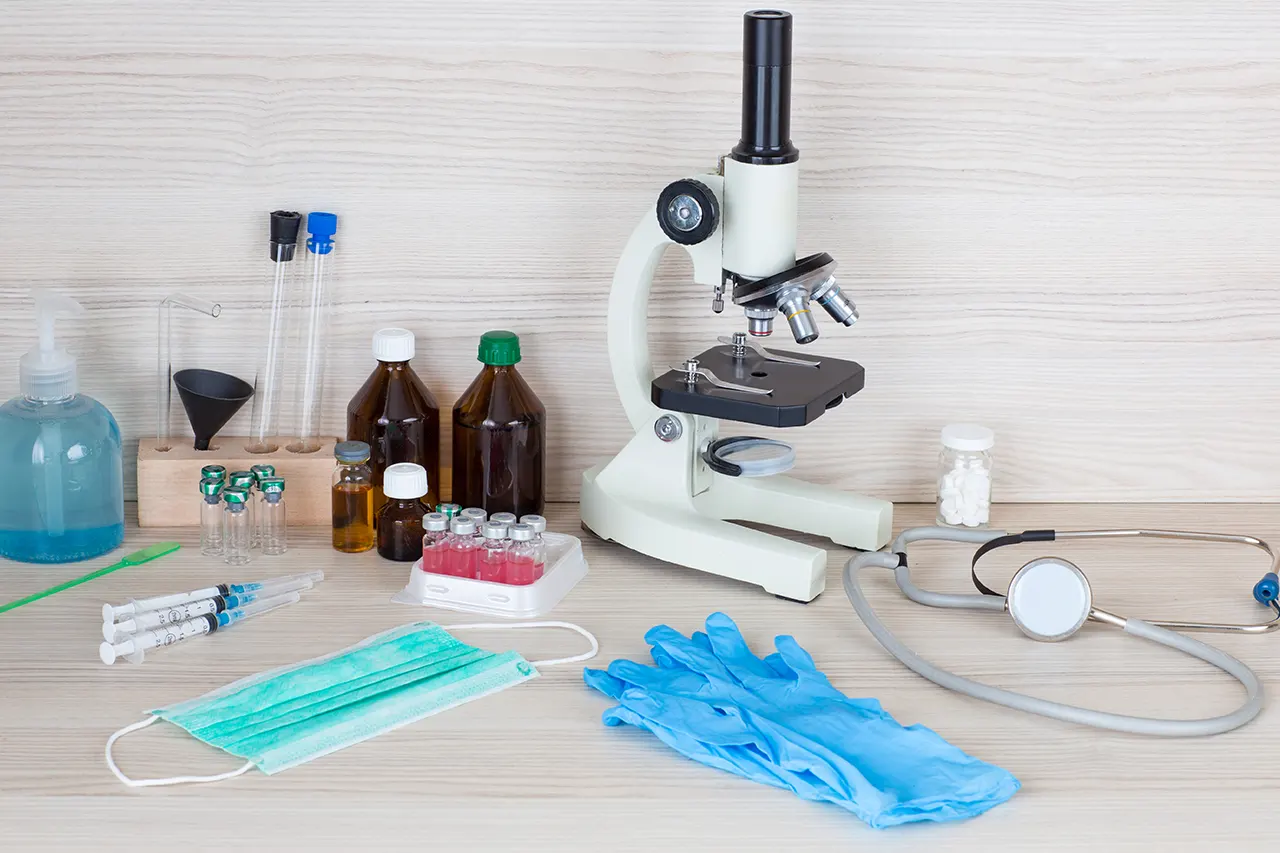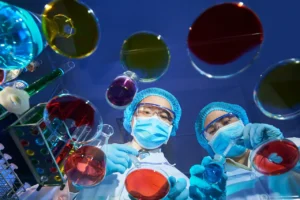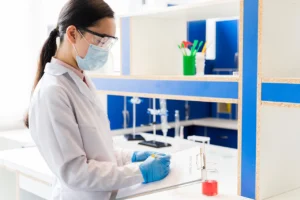
In-Depth: Why Merck, Germany Chemicals Are Trusted in Labs Worldwide
In the scientific community, a brand name is synonymous with quality and reliability. This article explores why “Merck” is the name researchers around the world trust.

Working in a scientific laboratory—whether for teaching, research, or quality control in industrial factories—requires appropriate tools and equipment to ensure experiments run smoothly, accurately, and safely. For those who are setting up a new lab or students just stepping into the world of experimentation, it can be confusing to know where to start.
Today, we've compiled a list of 10 "basic science equipment" that are truly the heart and soul of almost every laboratory. Let's take a look at what they are and the crucial functions each piece performs.
1. Beaker A beaker is a cylindrical glass container with a wide mouth, approximate volume markings, and a spout for easy pouring. It is one of the most versatile pieces of equipment, used for holding chemicals, mixing solutions, heating substances, and even temporarily collecting waste liquids.
2. Graduated Cylinder When you need to measure liquid volume more accurately than with a beaker, the graduated cylinder is the answer. Its tall cylindrical shape and precise volume markings allow for accurate reading of liquid levels. It is an essential tool for preparing solutions with exact concentrations.
3. Volumetric Flask For tasks requiring the highest accuracy in preparing standard solutions, the volumetric flask is indispensable. It is a long-necked glass bottle with a single precise volume mark on the neck, designed to hold an exact volume of liquid at a specified temperature.
4. Pipette A **pipette** is a device used for precisely measuring and transferring small, accurate volumes of liquids. They come in various forms, including **glass pipettes** (like volumetric and measuring pipettes) and **adjustable volume pipettes** (like micropipettes). Pipettes are essential for tasks requiring the handling of small sample quantities.
5. Stirring Rod A stirring rod is a simple yet frequently used piece of equipment, typically made from chemical-resistant glass. It's used for mixing solutions to ensure even distribution, speeding up the dissolution of solids, or guiding liquids when pouring from one container to another to prevent spills or splashing.
6. Digital Balance For most chemical experiments, measuring the mass of substances is crucial, making the **digital balance** an absolutely essential scientific instrument. It can weigh substances quickly and accurately, and is available in various levels of precision, ranging from two decimal places up to four or five decimal places for analytical work requiring high accuracy.
7. Microscope In biology or medical laboratories, the **microscope** is a window into the world invisible to the naked eye. It is used to view and study microorganisms such as cells, bacteria, or various tissue structures. It is a fundamental tool that vastly expands the horizons of learning.
8. Stand and Clamp These pieces of equipment act as a "third hand" in the lab. They're used for holding glassware or other apparatus firmly in the desired position, such as setting up distillation apparatus or securing a burette during titration. This makes experiments more convenient and safer.
9. Alcohol Burner It's a basic, safe, and easily controllable heat source. It's used for heating solutions that don't require very high temperatures for boiling, or for sterilizing certain equipment, such as inoculation loops.
10. Personal Protective Equipment (PPE) Safety always comes first. The basic PPE that every lab must have includes **safety goggles** to protect eyes from chemical splashes, a **lab coat** to protect skin and clothing, and **rubber gloves** to prevent direct contact with chemicals.
Got it! I'm ready to start writing the article for Topic 1 with the SEO information you need. Please provide the details for Topic 1 and the SEO requirements.
basic-scientific-equipment
**Introduction** Equipping a functional laboratory begins with the right and complete set of basic science equipment. This article will introduce you to 10 indispensable items.
Working in a scientific laboratory—whether for teaching, research, or quality control in industrial factories—requires appropriate tools and equipment to ensure experiments run smoothly, accurately, and safely. For those who are setting up a new lab or students just stepping into the world of experimentation, it can be confusing to know where to start.
Today, we've compiled a list of 10 "basic science equipment" that are truly the heart and soul of almost every laboratory. Let's take a look at what they are and the crucial functions each piece performs.
1. Beaker A beaker is a cylindrical glass container with a wide mouth, approximate volume markings, and a spout for easy pouring. It is one of the most versatile pieces of equipment, used for holding chemicals, mixing solutions, heating substances, and even temporarily collecting waste liquids.
2. Graduated Cylinder When you need to measure liquid volume more accurately than with a beaker, the graduated cylinder is the answer. Its tall cylindrical shape and precise volume markings allow for accurate reading of liquid levels. It is an essential tool for preparing solutions with exact concentrations.
3. Volumetric Flask For tasks requiring the highest accuracy in preparing standard solutions, the volumetric flask is indispensable. It is a long-necked glass bottle with a single precise volume mark on the neck, designed to hold an exact volume of liquid at a specified temperature.
4. Pipette A **pipette** is a device used for precisely measuring and transferring small, accurate volumes of liquids. They come in various forms, including **glass pipettes** (like volumetric and measuring pipettes) and **adjustable volume pipettes** (like micropipettes). Pipettes are essential for tasks requiring the handling of small sample quantities.
5. Stirring Rod A stirring rod is a simple yet frequently used piece of equipment, typically made from chemical-resistant glass. It's used for mixing solutions to ensure even distribution, speeding up the dissolution of solids, or guiding liquids when pouring from one container to another to prevent spills or splashing.
6. Digital Balance For most chemical experiments, measuring the mass of substances is crucial, making the **digital balance** an absolutely essential scientific instrument. It can weigh substances quickly and accurately, and is available in various levels of precision, ranging from two decimal places up to four or five decimal places for analytical work requiring high accuracy.
7. Microscope In biology or medical laboratories, the **microscope** is a window into the world invisible to the naked eye. It is used to view and study microorganisms such as cells, bacteria, or various tissue structures. It is a fundamental tool that vastly expands the horizons of learning.
8. Stand and Clamp These pieces of equipment act as a "third hand" in the lab. They're used for holding glassware or other apparatus firmly in the desired position, such as setting up distillation apparatus or securing a burette during titration. This makes experiments more convenient and safer.
9. Alcohol Burner It's a basic, safe, and easily controllable heat source. It's used for heating solutions that don't require very high temperatures for boiling, or for sterilizing certain equipment, such as inoculation loops.
10. Personal Protective Equipment (PPE) Safety always comes first. The basic PPE that every lab must have includes **safety goggles** to protect eyes from chemical splashes, a **lab coat** to protect skin and clothing, and **rubber gloves** to prevent direct contact with chemicals.
Summary
This is just a part of the essential basic science equipment. Having these tools complete and in good condition will help your laboratory work proceed efficiently and safely. If you are looking for high-quality equipment for your lab, at
MIT Trade We provide sales and import services for all types of scientific equipment, instruments, and chemicals. We are ready to provide expert consultation to meet all your needs. Contact us today!

In the scientific community, a brand name is synonymous with quality and reliability. This article explores why “Merck” is the name researchers around the world trust.

Cultivation of microorganisms is the heart of microbiology, and culture media is a key factor. This article will introduce you to the types of culture media.

Storing chemicals isn’t just about finding a place to put them, it’s about safety. This article is a guide to helping you store chemicals in your lab properly.
เว็บไซต์ mit-trade.com มีการใช้งานเทคโนโลยีคุกกี้ หรือ เทคโนโลยีอื่นที่มีลักษณะใกล้เคียงกันกับคุกกี้ บนเว็บไซต์ของเรา โปรดศึกษา นโยบายการใช้คุกกี้ และ นโยบายความเป็นส่วนตัวของข้อมูล ก่อนใช้บริการเว็บไซต์ ได้ที่ลิงค์ด้านล่าง